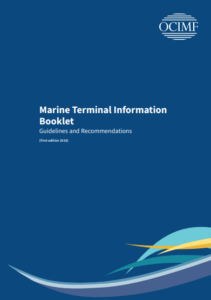OCIMF published the ‘Marine Terminal Information Booklet’. In this it provides guidelines and recommendations on how to present terminal and port information in a summarised form for easy reference.
When a ship is arriving in a port, it is considered as a high-risk activity. The dangers of this operation can be reduced by correct planning and making sure that the vessel’s crew knows about the port’s or terminal’s requirements.
[smlsubform prepend=”GET THE SAFETY4SEA IN YOUR INBOX!” showname=false emailtxt=”” emailholder=”Enter your email address” showsubmit=true submittxt=”Submit” jsthanks=false thankyou=”Thank you for subscribing to our mailing list”]
For this reason, providing an accurate terminal , berth and port information can ensure safe interaction between vessels and ports. In order for anyone involved to be aware of this information, it should be provided in a standard form.
Namely, OCIMF recommends terminal operators to copy this document for future use, while any additional policies about the terminal should be included as well. From time to time terminals would want to make changes to the document, but the report suggests that these changes remain to a minimum.
Additionally, berth limitation is presented by maximum displacement, Length Overall, beam, draft, freeboard and other important physical attributes. OCIMF does not recommend using Deadweight Tonnage as it may not present the ship’s actual size.
Of course all of the above information should be provided timely and it should be readily available in case of emergency.
Moreover, the port section should be fully completed when the terminal operator happens to be the port authority as well and is responsible for port approaches. However, port information should be included when a terminal operator has reliable and updated access to it. If this is not the case, operators should include details of where it can be found.
As sharing this kind of information is very important, OCIMF suggests the use of the Marine Terminal Information System (MTIS). This system includes terminal and port information through a questionnaire. The terminal information can also be attached to the MTIS to enable information sharing.
For more information, click in the PDF below





























































